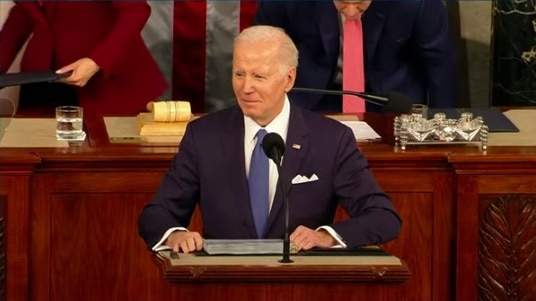The Senate confirmed President Biden’s 100th judicial nominee on Tuesday, marking a milestone for Biden and Senate Majority Leader Chuck Schumer (D-NY).
“This exceeds the pace of confirmations in the Trump and Obama Administrations,” said Senate Majority Whip Dick Durbin (D-Ill.), Chairman of the Senate Judiciary Committee.“Equally as important as the numbers, we are seeing diverse nominees confirmed—in both their professional and demographic backgrounds.”
The rate of Biden’s judicial nominations has been outpacing that of Trump for some time, thanks to the Democratic-led Senate in both the 117th and now the 118th Congresses, and Biden and Schumer have reportedly made it a priority to reshape the U.S. courts with judges who tend to be younger and liberal.
And as Durbin said, the pair’s goal has also been to increase diversity on the bench, both in terms of race and ethnicity as well as professional experience. Biden’s choice for Supreme Court Justice is a prime example: Ketanji Brown Jackson is not only the first Black woman, she’s also the first former public defender ever to serve on the high court.
Biden’s two latest confirmed nominees are yet further examples of diversity on the bench. On Tuesday, in a 54-45 vote, the Senate confirmed Gina R. Mendez-Miró who will be the first openly LGBTQ U.S. district judge for the District of Puerto Rico. Cindy Chung, confirmed Monday, is daughter of South Korean immigrants, will become the first Asian American judge to serve on the 3rd Circuit Court of Appeals, which serves parts of Pennsylvania, New Jersey, Delaware and the Virgin Islands.
According to data from the Federal Judicial Center, of Biden’s confirmed nominees, 47 were minority women and 19 were minority men, compared with 26 white women and five white men. (Three of Biden’s nominees, including Justice Jackson, were confirmed twice for two different courts, but are only being counted once in the Federal Judicial Center’s tally.)
By contrast, of the 229 judges confirmed during Trump’s four years in office, 11 were minority women and 26 were minority men, while 44 were white women and 148 were white men.


